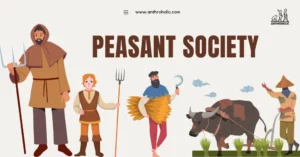AI Answer Evaluation Platform Live Now. Try Free Answer Evaluation Now
Theory of Transmutation of Species
The concept of transmutation of species, also known as evolution, has been a topic of interest and debate for centuries. Early thinkers, such as the ancient Greek philosopher Anaximander, proposed that life evolved from simpler forms to more complex ones [5]. However, it was not until the publication of Charles Darwin’s groundbreaking work, “On the Origin of Species,” in 1859 that the theory of evolution by natural selection gained widespread acceptance [3].

Conceptual Framework
Transmutation of species refers to the gradual change in the genetic makeup of populations over time, resulting in the emergence of new species. This process is driven by a combination of factors, including genetic variation, selective pressures, and the passage of time. In this article, we will explore the various mechanisms of transmutation, the evidence supporting the theory, and recent advances in the field.
Mechanisms of Transmutation
Natural Selection
Natural selection is the primary driving force behind transmutation. In a given environment, individuals with traits that increase their chances of survival and reproduction will pass those traits onto their offspring. Over time, these advantageous traits become more common in the population, leading to the emergence of new species [3].
Genetic Mutation
Genetic mutations are random changes in an organism’s DNA. Some mutations are beneficial, some are harmful, and others have no effect on an individual’s fitness. Mutations can occur spontaneously or due to exposure to environmental factors, such as radiation or chemicals. Genetic mutations are a crucial source of genetic variation, providing the raw material for natural selection to act upon [4].
Genetic Drift
Genetic drift is the random change in allele frequencies within a population due to chance events. Genetic drift can lead to the fixation or loss of certain alleles, which can ultimately result in the divergence of populations and the formation of new species. Genetic drift is particularly influential in small populations, where chance events can have a more significant impact on genetic variation [7].
Gene Flow
Gene flow is the exchange of genetic material between populations through interbreeding. Gene flow can introduce new alleles into a population, thereby increasing genetic variation. It can also counteract the effects of genetic drift and natural selection, as it allows for the sharing of advantageous alleles between populations. Gene flow can facilitate the spread of advantageous traits throughout a species and play a role in the formation of new species [10].
Table 1. Summary of Mechanisms of Transmutation
| Mechanism | Description | Role in Transmutation |
|---|---|---|
| Natural Selection | The process by which individuals with advantageous traits are more likely to survive and reproduce | Primary driving force behind transmutation; promotes the emergence of new species |
| Genetic Mutation | Random changes in an organism’s DNA | Provides the raw material for natural selection to act upon |
| Genetic Drift | Random change in allele frequencies within a population due to chance events | Can lead to the divergence of populations and the formation of new species, particularly in small populations |
| Gene Flow | Exchange of genetic material between populations through interbreeding | Facilitates the spread of advantageous traits and can play a role in the formation of new species |
Evidence for Transmutation
Fossil Record
The fossil record provides a chronological account of the history of life on Earth. Fossils of extinct species demonstrate the existence of organisms that were once present but are no longer found in the modern world. Transitional fossils, which display features of both ancestral and descendant species, provide crucial evidence for the transmutation of species over time [9].
Comparative Anatomy
Comparative anatomy is the study of the similarities and differences in the structure of organisms. Homologous structures, which are anatomical features that share a common ancestry but may have different functions, provide evidence of the transmutation of species. For example, the forelimbs of humans, bats, and whales all share a similar bone structure, suggesting a common ancestor and an evolutionary relationship between these species [8].
Molecular Biology
Molecular biology techniques, such as DNA sequencing, have provided further evidence for the transmutation of species. By comparing the DNA sequences of different species, scientists can determine the degree of genetic similarity between organisms, which is indicative of their evolutionary relationships. Molecular clock analysis, which estimates the time of divergence between species based on genetic differences, has also provided key insights into the history of life on Earth [12].
Biogeography
Biogeography is the study of the distribution of species across the Earth. Patterns of species distribution provide evidence for the transmutation of species, as closely related species are often found in close proximity to one another. For example, the unique fauna of the Galápagos Islands, such as Darwin’s finches, inspired Darwin’s theory of evolution by natural selection [6].
Recent Advances in Transmutation Research
Epigenetics
Epigenetics is the study of heritable changes in gene expression that do not involve changes to the underlying DNA sequence. Epigenetic modifications, such as DNA methylation and histone modifications, can influence an organism’s phenotype and can be passed down to future generations. Epigenetics has expanded our understanding of the transmutation of species by demonstrating that the environment can directly influence an organism’s genetic makeup [1].
Synthetic Biology
Synthetic biology is an interdisciplinary field that combines biology, engineering, and computer science to design and construct new biological systems. Synthetic biology has the potential to revolutionize our understanding of the transmutation of species by allowing scientists to directly manipulate an organism’s genetic makeup and create novel organisms with desired traits [2].
Horizontal Gene Transfer
Horizontal gene transfer (HGT) is the transfer of genetic material between organisms through mechanisms other than reproduction. HGT has been observed in bacteria, archaea, and some eukaryotes, and can play a significant role in the evolution and transmutation of species. HGT can introduce new genetic material into a population and facilitate the rapid spread of advantageous traits, such as antibiotic resistance in bacteria [11].
Conclusion
The transmutation of species is a fundamental concept in biology that has shaped our understanding of the diversity and interconnectedness of life on Earth. Through the study of various mechanisms, such as natural selection, genetic mutation, genetic drift, and gene flow, scientists have been able to piece together the complex history of species evolution. Evidence from the fossil record, comparative anatomy, molecular biology, and biogeography supports the theory of transmutation, while recent advances in epigenetics, synthetic biology, and horizontal gene transfer have expanded our knowledge of the processes that drive species evolution.
As research continues, our understanding of the transmutation of species will undoubtedly continue to grow, allowing us to better appreciate the intricacies of the natural world and the evolutionary history that has shaped the diversity of life on our planet.
References
[1] Bird, A. (2007). Perceptions of epigenetics. Nature, 447(7143), 396-398.
[2] Church, G. M., & Regis, E. (2012). Regenesis: How synthetic biology will reinvent nature and ourselves. Basic Books.
[3] Darwin, C. (1859). On the origin of species by means of natural selection, or the preservation of favoured races in the struggle for life. John Murray.
[4] Futuyma, D. J. (2017). Evolution (4th ed.). Sinauer Associates, Inc.
[5] Graham, D. W. (2013). Anaximander. In E. N. Zalta (Ed.), The Stanford Encyclopedia of Philosophy (Summer 2013 Edition). Retrieved from https://plato.stanford.edu/entries/presocratics/
[6] Grant, P. R., & Grant, B. R. (2008). How and why species multiply: The radiation of Darwin’s finches. Princeton University Press.
[7] Kimura, M. (1983). The neutral theory of molecular evolution. Cambridge University Press.
[8] Owen, R. (1848). On the archetype and homologies of the vertebrate skeleton. John Van Voorst.
[9] Prothero, D. R. (2007). Evolution: What the fossils say and why it matters. Columbia University Press.
[10] Slatkin, M. (1987). Gene flow and the geographic structure of natural populations. Science, 236(4803), 787-792.
[11] Soucy, S. M., Huang, J., & Gogarten, J. P. (2015). Horizontal gene transfer: Building the web of life. Nature Reviews Genetics, 16(8), 472-482.
[12] Zuckerkandl, E., & Pauling, L. (1965). Molecules as documents of evolutionary history. Journal of Theoretical Biology, 8(2), 357-366.



